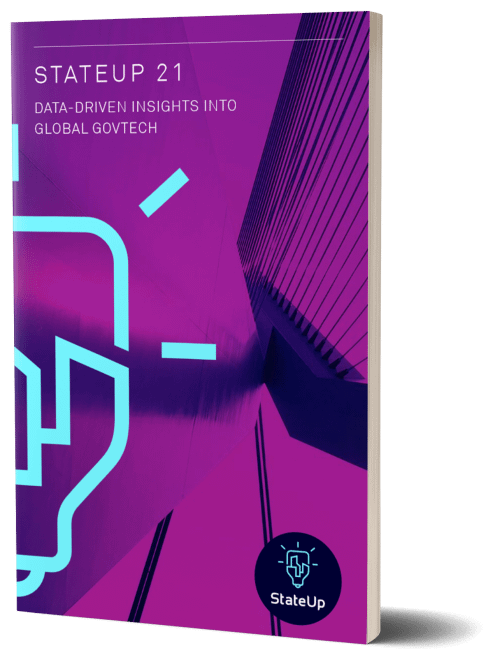Public-Purpose Technology Intelligence
Summary
This information is accurate as of January 2021. For more up-to-date information, access Nebula, our Public-Purpose Tech intelligence platform. Join with our Nebula Community Membership, or upgrade to a Nebula Pro Membership.
- Founded in 2014
- Total Funding: £57.7 million
- Latest Funding: Series B, £40.3 million
- Revenue band: Not supplied
- Lead investors: Sequoia Capital, XN, Valor Equity Partners, and GV
- Office: Colorado, US (HQ).
- FTEs: 50-100
- Key clients/partners: Emmet County Department of Public Works and Boulder County Recycling Facility; Waste Connections, Ryohshin.
- Key execs: Matanya Horowitz, CEO and Founder: PhD Controls and Dynamical Systems, Caltech, BSc Electrical Engineering and Computer Science, University of Colorado Boulder
Profile
Sorting waste effectively, safely and cost-efficiently is one of the biggest challenges facing the recycling industry. Waste items can be hazardous, and with items that are hybrids of recyclable and non-recyclable material, it can be difficult to isolate the former. This process is costly, but failure is costlier– sorted material can be rejected for not meeting industry standards and buyer specifications for quality.
AMP Robotics combines cloud analytics, computer vision algorithms and robots to automate and optimize sorting. AMP Cortex™ is the brawns of the system. It consists of a suction cup attached to three robotic arms and designed to hang above the sorting conveyor belt. AMP Neuron™ forms the brains of the robotics system. It involves a camera that relays image data to deep learning neural networks hosted on the cloud. The use of machine learning means that AMP’s product is constantly improving in sorting waste. Materials recovery facilities (MRFs) can also analyze data stored on the cloud to inform decision making.
AMP is germane to industry trends. Before the coronavirus pandemic, automating sorting already had a strong business case: there were labour shortages due to the danger associated with sorting; in 2018, China, once the world’s largest recyclables market, imposed strict restrictions on waste imports. Automation is also more efficient. While humans make 20-40 picks per minute, newer robots make 60-80 picks per minute. The pandemic has seen labour shortages stiffen due to added fears of handling coronavirus-contaminated waste. Recycling has also risen up the policy agenda as a way to mitigate climate change.
Plans
- Off a strong Series B, AMP is expanding outside the US. It is currently also in Canada, Japan and Spain.
- Greater market traction in the sortation of electronic, construction and demolition waste.
Who Should Speak To This Company
Public Works/Infrastructure Departments, MRFs, Construction Companies, Sorting Robotics Companies
Company In Action
Buffeted by low levels of unemployment before the pandemic, Recycling & Disposal Solutions of Virginia (RDS) turned to AMP Robotics to address its shortage of sorters. Installing the four robots RDS needed did not require many changes to RDS’ infrastructure and before long they were up and running. The robots have reportedly led to improvements on many fronts. They sort faster and more accurately than humans. They have improved on their own picking speed since being installed, thanks to Neuron’s deep learning capabilities. As a result, RDS has been able to increase both quantity and quality of extracted commodities. Labour cost-savings have enabled RDS to restructure employment towards higher skilled positions. RDS hired a robotics expert to a management position and retrained a sort line employee to maintain the robots, a higher-paid role. RDS has also been better able to weather the coronavirus-induced disruption as the robots do not fall sick or require protective equipment. Finally, RDS is now able to measure the effects of process changes on productivity because AMP’s cloud technology captures and continually analyzes these metrics.
StateUp View
AMP products provide quintessential automation deliverables: reduced operational costs, optimized commodity quality and lowered risk to human safety. But the masterstroke is pioneering advanced automation in waste sorting. Three reasons we think that first mover advantage will provide a long lasting edge in waste sorting: First, product development is capital-intensive and costly, a barrier to entry only somewhat counteracted by the availability of VC capital. Second, customer lock-in is likely–AMP charges a hefty $300,000 for its Cortex and Neuron pairing, meaning long-term horizons for return on investment; the products are themselves durable and more importantly, self-improving. Third, scale should bring lower production costs per robot and aggregated, anonymized data from customers is valuable fodder for fine-tuning deep-learning parameters.
With existing competition, AMP’s hard-to-replicate deep learning capabilities and innovative revenue strategy should provide the edge. A testament to the difficulty of arriving at a working AI product is AMP’s partnership with Machinex, an established sorting robotics company. In 2018, AMP began providing the AI behind Machinex’s sorting robot, SamurAI. Finally, in a low margins industry like recycling, selling an expensive product can be difficult. Here, AMP’s $6,000 a month lease option reduces upfront costs for MRFs and locks such customers into long-term contracts.

Get Access To The Full Report
- Discover data-driven insights into key GovTech subsectors and technologies
- Learn how investment into GovTech is changing
- Read the full StateUp 21 member profiles



